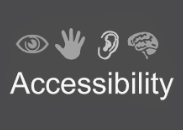Infrared (IR) and Projected Capacitive (PCAP) are the two most common touch screen technologies OEMs are using these days. However, it is difficult to find the difference upon the first look or while using the touch application unless you have an understanding of its core features.
But the two technologies actually differ in design and structure. Being an OEM, you should have a clear idea about the IR (Infrared) and PCAP Touch Screens. This way, you would be able to make an informed decision during the selection of a touch screen for your application.
Difference between Projected Capacitive and Infrared Touch Screens
Projected Capacitive Touch Screens
Given the high levels of accuracy and speedy response times, PCAP touch screen technology is typically used for smartphones and tablets. But it is not limited to applications with small screen sizes. PCAP touch technology can also be used for larger screens but on a limited scale.
PCAP touch screens have a toughened edge-to-edge glass display for a remarkable output. From easy cleaning to smooth gesture recognition, PCAP offers an amazing interactive experience while using touch applications. However, PCAP touch screens could be up to 60% more expensive than their Infrared counterparts.
Infrared Touch Screens
For commercial applications, OEMs usually trust IR (Infrared) touch technology. This technology doesn’t require actual contact with the screen, so minimum damage is incurred over time. IR (Infrared) touch technology involves embedded LED lights and sensors into the bezel of the display above the glass. LED’s beam signal across to the corresponding sensor on the other side forms an invisible grid. When the grid breaks upon touch, the sensors identify the touch point.
In IR touch technology, a bezel will always be required. Unlike PCAP, IR technology can scale up to much larger sizes, without compromising the display quality. But in accuracy, PCAP gets an edge over IR technology. Also, IR touch screens cost relatively lesser than PCAP touch solutions.
A D Metro Offers Both IR and PCAP Touch Screens
When it comes to choosing between IR and PCAP touch screens, you need to list out your requirements and then match them with the offered solutions.
A D Metro offers both the IR and PCAP touch screens with innovative modifications to overcome the gaps and provide you the perfect solution.
In IR technology, they have Linear Correlating Infrared (LCIR) touch technology which could be an excellent choice for applications requiring multi-touch but facing difficulty in integrating PCAP touch screens. The LCIR (Infrared) touch screens offer 100% sunlight immunity that is not found in any other IR touch technology. They also offer 100% optical clarity and maximum contrast, reliable two touch functionality and input compatibility with gloves and a 5mm stylus.
On the other hand, innovative PCAP touch technology offered by A D Metro encompasses an adaptive ARGON PCAP controller that detects and automatically adapts to a wide range of off-the-shelf sensor sizes, formats and cover glasses. Its built-in configuration utility offers adjustment of orientation, touch sensitivity and maximum concurrent touches, particularly useful for embedded applications.







